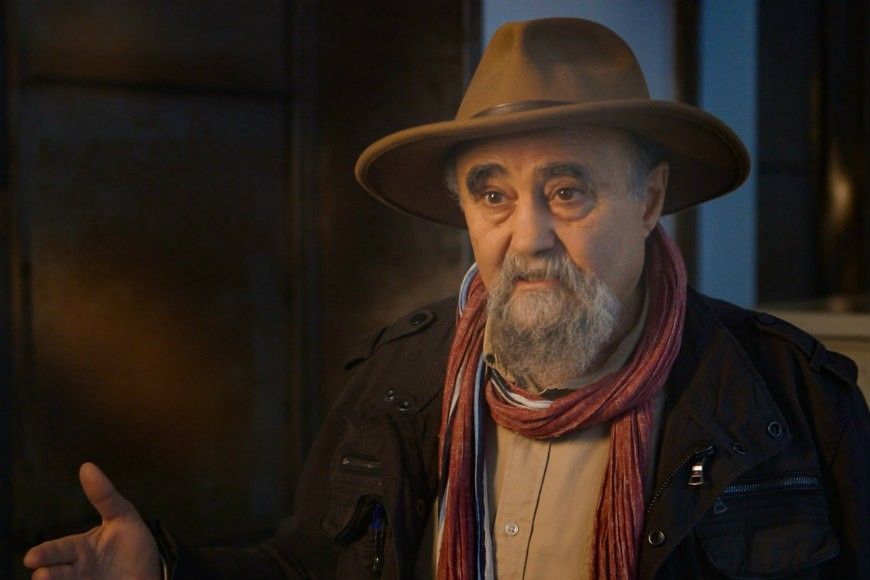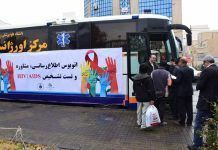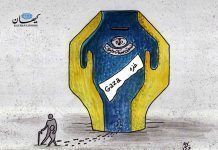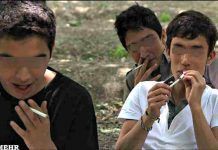April 30, 2018
By Ahmad Rafat
Abbas Attar, the world-famous Iranian photojournalist, died on April 25 in Paris after a long illness age 74.
Abbas, as he was widely known, authored 11 books and left behind hundreds of thousands of photographs. A collection of his photos entitled “La révolution confisquée,” which chronicled the 1979 Islamic Revolution, was published in 1980 in France. After revisiting Iran a few years later, Abbas published his book “Iran Diary” in 2002.

“Abbas was a pillar of Magnum, a godfather for a generation of younger photojournalists,” said Magnum’s director Thomas Dworzak. “He was a citizen of the world he relentlessly documented — its wars, its disasters, its revolutions and upheavals, and its beliefs – all his life.”
Magnum is one of the world’s most prestigious photographic agencies, with offices in New York, Paris, London, and Tokyo. It was founded in 1947 by a group of world-class photographers including Henri Cartier-Bresson (۱۹۰۸– ۲۰۰۴) and Robert Capa (1913-1954).
Abbas and his family left Iran in 1954 when he was only 10 years old. Four years later, he produced his first reportage by photographing the Algerian war of independence. After receiving his journalism degree in England, he returned to Paris. He worked with the French agencies Sipa Press (1971-73) and Gamma (1974-80) before joining Magnum Photos in 1981.
Abbas and Safa Haeri (1937-2016) were the only two Iranian journalists who covered the Vietnam War. Years ago, I met those two gentlemen at a restaurant in Paris and listened to their extraordinary story about the night they spent drinking vodka with Viet Cong fighters.
Abbas said: “They were villagers and didn’t speak French like those who lived in the cities. We tried to communicate with them in French. They didn’t trust us. So we decided to speak to them in Farsi! That immediately broke the ice. They stopped being hostile towards us, even though no one understood what the other said.”
Many considered Abbas to be a philosopher who used a camera instead of a pen. His photography speaks volumes.
Abbas, however, regarded himself not so much as a philosopher, but as someone who chronicled history. His pictures are not mere portraits or landscapes: they are snapshots of events frozen in time. He passionately believed in the process of capturing a shot.
“Before clicking the shutter, the photographer must know where he is, what he is seeing, and what he wants to say. A photojournalist doesn’t deal with still life, but rather with a dynamic world,” he once said.
After the September 11, 2001 terrorist attacks, Abbas began a project on religion which he worked on until his death. During one of our last meetings in Paris, I asked him why he had chosen religion as his subject matter.
He replied: “I am not concerned with religion, but rather with the God in whose name devout people blow themselves up around the world.”
His book “Allah O Akbar,” a journey through militant Islam, was published in both English and French. He traveled the globe, meeting Muslims in the Arab world, India, Malaysia, and China.
He said: “I am not concerned with Islam. But I want to find out why people commit terrorist acts in the name of Islam.”
He also published a book on Hinduism entitled “Les Enfants du Lotus” in 2011. He was working on a book on Judaism at the time of his death. The hope is that it will be published by Magnum.
The last time we worked together was during the 2003 Gulf War that precipitated the downfall of Saddam Hussein. We traveled together through Baghdad and Najaf.
Our trip to Najaf was rather eventful. We took a taxi there. The city was packed with visiting pilgrims. A sea of people made it nearly impossible to take photographs. A group of supporters of the Iraqi Shia cleric, Muqtada al-Sadr, forced us into a mosque. They took us into a room and interrogated us.
Abbas tried communicate with them by stringing together Arabic and Farsi words. He hoped to convince them that, although we were reporters, we had traveled to Najaf as pilgrims on that occasion. Somehow, in the end, he was able to calm those angry young militants. They released us after two hours — on the condition that we go to the Imam Ali Mosque for prayers.








